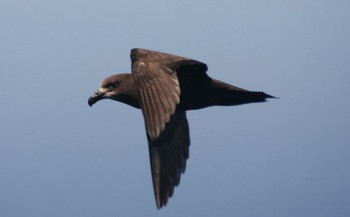Rachel Buxton (Department of Zoology and Centre for Sustainability, University of Otago, Dunedin, New Zealand) and colleagues have published in the Journal of Wildlife Management on monitoring burrowing petrels, utilizing field data from the Grey-faced Petrel Pterodroma macroptera gouldi.
The paper’s abstract follows:
“Burrow-nesting petrels (order Procellariiformes) are keystone species in island ecosystems, where they modify habitat through guano deposition and burrow digging. Burrowing petrels are among the most threatened groups of birds, yet robust long-term monitoring data remain scarce because of the financial and logistical constraints of working on offshore breeding islands, the variety of surveying strategies used, and the birds’ below-ground breeding behavior. We examined the sampling requirements of monitoring programs to detect changes in the number of breeding pairs of gray-faced petrels (Pterodroma gouldi), a common species in northern New Zealand. We first examined the relationship between burrow entrance density and breeding pair density using 4 years of data from 3 large colonies. We then conducted a simulation-based power analysis to assess the ability of different burrow-occupancy sampling regimes to detect changes in breeding bird abundance. Power to detect change was influenced by population growth rates, initial bird density, interannual variation in abundance, plot size, number of plots, intervals between surveys, time of year surveys are undertaken, and duration of the monitoring program. Our analyses suggest that, under the most suboptimal monitoring conditions, at least 45 randomly assigned 5-m-radius plots surveyed annually during the incubation period for 20 years will be required to detect a 1% annual change in breeding bird abundance. Because power will vary depending on project specifications, local conditions, and potential change, we created an online application with over 50,000 combinations of starting parameters (https://landcare.shinyapps.io/petrels). This allows managers to determine the power of different combinations of survey intensities while maintaining consistency and maximizing efficiency.”
Grey-faced Petrel, courtesy of Sabine's Sunbird
With thanks to Rachel Buxton.
Reference:
Buxton, R.T., Gormley, A.M., Jones, C.J., Lyver, P.o’B. 2015. Monitoring burrowing petrel populations: a sampling scheme for the management of an island keystone species. Journal of Wildlife Management DOI: 10.1002/jwmg.994.
John Cooper, ACAP Information Officer, 29 September 2015

 English
English  Français
Français  Español
Español 